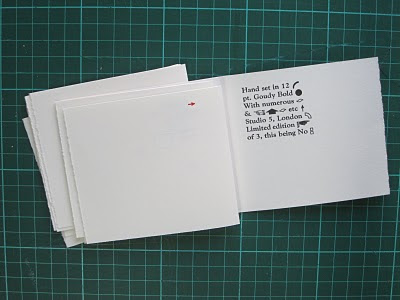
After all the spine linings that could be removed dry, I moved on to a wet cleaning process.
The text block was placed in working boards and clamped in my backing press with just the spine area above the cheeks. A thick paste was applied to the spine to soften up the mull and old adhesive. To keep the paste moist I covered the whole area in cling-film and waited for about 10 minutes before removing the paste and any mull and adhesive that had become soft. I then repeated the process until the whole of the spine area was as clean as I could make it.

Care must be taken, as the paper becomes soft and can be damaged, even more in the case of this particular book. The sections are in fact just a single fold (Folio).....not fun!
What became more evident as the spine became visible was the shocking rounding and backing.

Sections had been crushed, threads broken, old crusty hot glue... not nice. I imagine that this poor book was rounded and backed last thing on a Friday afternoon or after a particularly good lunch.





















